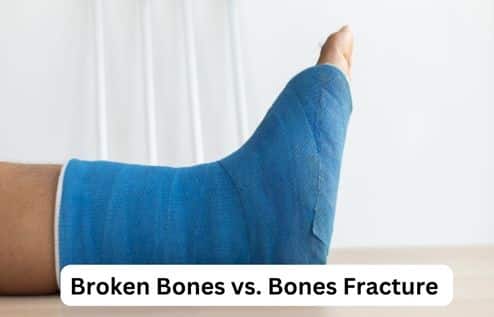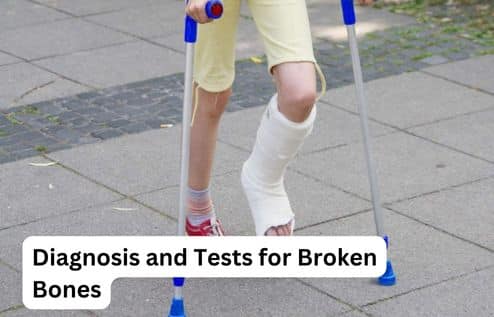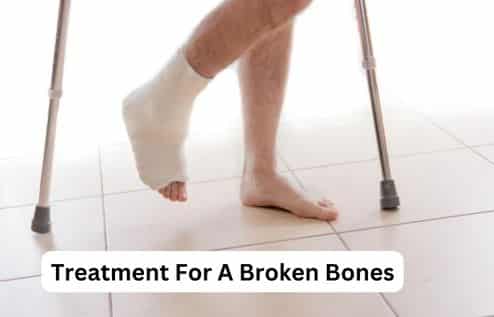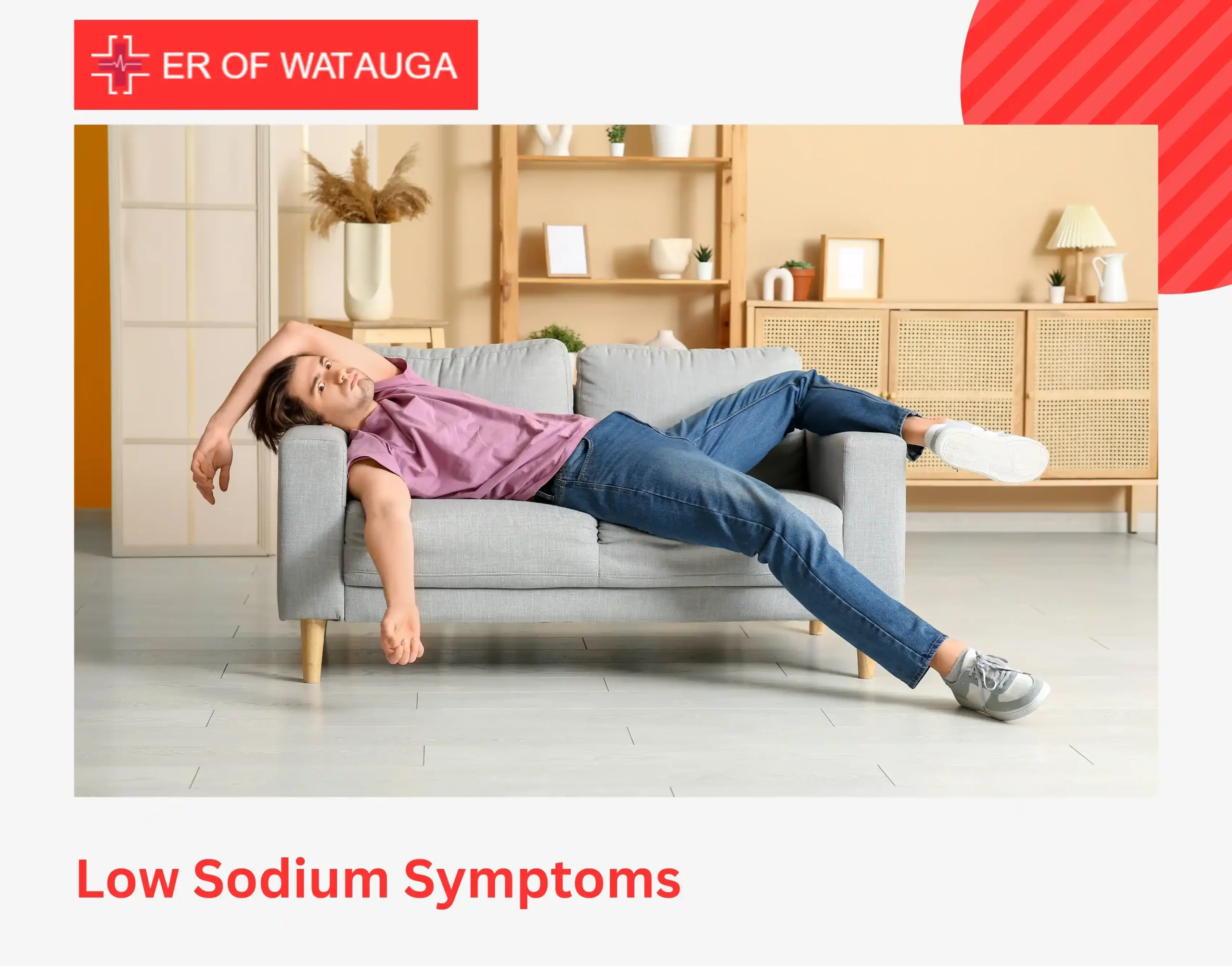Are you looking for an ultimate guide on how to deal with Broken Bones? You have landed on the right page. Among the greatest marvels of the human anatomy are the Boness. They’re strong enough to hold us up and shield vital organs from harm, yet they’re flexible enough to cushion us when we stumble. Imagine breaking a Bone after falling off your skateboard or tripping over a lost banana peel. It can take your day from happy to embarrassing in an instant.
A fractured Bone or Broken Bone hurts like hell. If a Bone breaks, first aid must be administered immediately. Pain and bleeding could intensify if you move the injured Boness. Additionally, tissue injury could result. This guide will teach you how to deal with your broken Bones with confidence and calmness. It will teach you how to spot the signs of a break and the different types and treatment choices.
What is a Broken Bones?
A Broken Bone results when it is subjected to a force that exceeds its strength. Consequently, it disrupts the Bones’s structure and strength. It causes inflammation, discomfort, and diminished ability to move or do other tasks.
An injury like a fall, car accident, or sports injury is most likely to cause a fracture. Some kinds of fractures are more likely to occur in people with particular medical problems or who are subject to repetitive stresses, such as when they run.
Surgery may be necessary to fix Broken Bones. A sling, cast, brace, or splint may be all that’s needed to help some people repair broken bones. Your recovery time will be different for each broken Bone, depending on its location, severity, and underlying cause.
Broken Bones vs. Bones Fracture

Bones fractures and Broken Bones are medical terms for the same condition. The two terms could be used synonymously. In medical terminology, an injured Bone is called a fracture. Once your doctor diagnoses your injured Bones, they will likely describe it as a specific form of fracture.
Broken Bones vs. Bones Bruise
Broken Boness and bruised Boness are both painful injuries that happen when a strong force hits your body, usually from a fall, car accident, or sports injury. The level of injury to your Bones determines the difference.
Like skin, bones are a living tissue that can take a beating just like any other part of your body. Bruising a Bone requires significantly more force than bruising skin, however the two injuries are otherwise extremely similar. A person’s Boness can bleed without breaking if they take a hard enough hit.
A Bone bruise occurs when blood becomes trapped under the surface of the bone following an accident. When a Bone is struck with enough force to break it in at least one spot, it is called Broken Bone. Bone bruises heal quickly, but fractures take a lot longer and are far more serious.
Feeling discomfort on or near a Bone after a trauma? Seek immediate medical attention at an emergency hospital or primary care physician’s office. It is critical to have a bone specialist check your injury as soon as possible.
Causes Behind Broken Bones?
Traumas frequently result in Broken bones. If you take a hard enough blow to a Bone, it will break. The following are among the most common reasons:
- Car accidents
- Falls
- Sports injuries
It is possible to have Broken Bones without hurting yourself sometimes. Stress fractures are caused by repetitive stresses, such as when you run or play a sport. The same holds for the hands and arms: if you do the same thing over and over again, you could end up with overuse syndrome. A stress fracture is more prone to occur in someone whose hands are used repetitively, such as in musicians or office workers.
Having osteoporosis significantly raises your chances of Broken Bones. Over a million fractures are caused by osteoporosis annually.
Diagnosis and Tests for Broken Bones

How A Broken Is Bones Diagnosed?
Radiographs and a thorough medical history will help your doctor confirm a Broken Bones diagnosis. If you’re admitted to the hospital following a trauma, this may be done in the emergency room.
If you end up in the emergency room, a multidisciplinary team of doctors and nurses will work to stabilize you and address your injuries in a priority sequence, regardless of how serious they are. Imaging studies will be necessary to establish the presence of any fractures once you have been stabilized.
Which Tests Are Done to Diagnose Broken Bones?
For an image of your Broken Bones, you’ll need an imaging test:
X-rays
These imaging studies can reveal the extent of bone damage and confirm the presence of any fractures.
Magnetic Resonance Imaging (MRI)
Your healthcare physician may recommend an MRI to gain a comprehensive view of the Broken Bones and surrounding tissue damage. The ligaments and cartilage that surround your Boness can also be revealed by an MRI.
CT scan
The contrast between an X-ray and a CT scan is enormous, so your doctor or surgeon will be able to see more information in the image of your bones and soft tissues.
Bones scan
When an X-ray fails to detect broken Bones, a bone scan can help healthcare professionals locate the affected area. Although it requires more time typically two appointments spaced four hours apart, this scan is useful for finding some fractures.
Treatment For A Broken Bones

Your treatment options for a fracture will be based on its kind, the origin, and the extent of bone damage.
Immobilization
You may just require a cast or splint if your fracture is small and the Boness has not moved much (non-displaced). The typical duration of splinting is three to five weeks. The duration of a cast, if necessary, is usually six to eight weeks. In either situation, you will probably require subsequent X-rays to verify proper Bone repair.
Closed Reduction
If your break is more serious, a closed reduction may be necessary to straighten your Boness. In this non-invasive technique, your healthcare professional will use external forces to realign your fractured bone. One of the following will be administered to you to alleviate any discomfort you may have during the procedure:
- The region surrounding your fracture will be numbed using a local anesthetic
- Relax your entire body using sedatives
- Putting you to sleep during the procedure with general anesthesia
A splint or cast will be applied by your healthcare professional following the closed reduction.
Broken Bones Surgery
When a Bone breaks, surgery may be necessary. Multiple methods are available to your surgeon for treating Broken Bones, each tailored to the specific kind of fracture and the extent of bone loss.
Internal fixation
To facilitate healing and regrowth, your surgeon will fix your Boness into their proper alignment after setting them. In most cases, a procedure known as an internal fixation will be performed. This entails the surgeon inserting metal bits into your Bones to support them as they heal.
External fixation
A fixation from outside the body may be necessary. To fix a Broken Bones fracture, your surgeon will insert screws into the Bones on either side of the injury and then attach them to an external brace or bracket. Before an internal fixation, this is typically a short-term solution to stabilize the fracture and allow it to start healing.
Arthroplasty
Shoulder, elbow, or knee fractures may necessitate arthroplasty, a surgical procedure that replaces damaged joint components. After identifying the Broken Bones joint, your surgeon will remove it and implant a prosthetic. Prosthetic joints can be made of metal, ceramic, or durable plastic. Wearing a prosthetic joint allows you to move and look much like your natural joint.
Transplanting Bones
If the Broken Bones aren’t healing properly or if the fracture is very displaced, Bone grafting may be necessary. Your surgeon will repair your broken Bones by inserting new bone tissue.
What Medications Are Used To Treat Broken Bones?
Aspirin and ibuprofen are examples of over-the-counter NSAIDs that can increase the risk of bleeding and other postoperative problems. Medication options for postoperative pain management for Broken Bones will be discussed with you by your surgeon.
Side Effects of NSAID
Side effects of NSAIDs include:
- Bleeding
- Ulcers
- Stomach pain
- Bowel complications
How long does it take a Broken Bone to heal?
Many things affect how long it takes for a Broken Bones to mend, such as:
- What caused it
- Which Bones is broken
- Which type of fracture it is
- Which treatment(s) you need
- Any other injuries you experienced
After a few weeks of immobilization or surgery to fix your Broken Bones, you should be ready to start moving around again. A year or longer may be required for the healing of more serious fractures.
Urgent Care for Broken Boness
The likelihood of an emergency room visit increases in proportion to the severity of the fracture. Your age, the severity of any other injuries you may have had, and the precise location of the Broken Bones are further considerations.
Stress fractures and broken limbs are examples of small fractures that can be treated at an urgent care center. However, you need to see the emergency room if your Broken Bones are more serious, such as an open or complete one.
How to Fix Broken Boness in Stranded Deep?
While breaking a bone in Stranded Deep may seem like the end of the world, it’s pretty easy to fix Broken Bones and get back to living.
In Stranded Deep, players may need rags to heal from bleed or an antidote to heal from poison. However, the splint item is what is needed to heal Broken Bones. To use the splint, just equip it and hold it like any other weapon. Then, press the left mouse button (or the right trigger on controllers) to use it. The figure should be put on the splint in a short animation, and then the broken Boness status effect should go away.
How to Heal Broken Boness Fast?
When Bone fragments are stacked, the healing process is facilitated significantly. Sometimes, when Boness breaks, the pieces remain aligned. On the other hand, your doctor may need to physically realign the bone fragments after they shift after the break.
Take your immobilization orders seriously
Being immobile for a long time is understandably one of the most difficult aspects of healing from Broken Bones. On the other hand, it’s a crucial step in the process of repairing broken bones.
Focus on your diet
You can do things to speed up and ease the healing process of your Broken Bones while you wait for them to recover. Vegetables, fruits, lean proteins, and enough water make up a nutritious diet. During the process of Bone mending, it is crucial to consume foods that are rich in calcium, vitamin D, and protein. Some examples of such foods are dark, leafy greens, broccoli, fish, meat, yogurt, nuts, and seeds.
If you smoke, quit it
If you smoke, you better quit it as smoking can completely impede the healing process.
What Foods Help Broken Bones Heal Faster
A Broken Bone is one of life’s most devastating injuries. That’s why getting the right care is crucial and why healing takes time.
Inadequate consumption of nutrients like calcium and vitamins A and D may impact bone health and the rate and extent of Bone repair after a fracture, according to research.
The rate of Bone healing is affected by various factors, one of which is food. Mentioned diet can help your Broken Bones faster:
Dairy
Vitamin D and calcium, found in dairy products like milk, yogurt, and cheese, are essential for healthy bones development and maintenance. A higher consumption of dairy products may hasten the healing of a fracture.
Soy Milk
For those who cannot digest lactose, fortified soy milk is an excellent alternative to dairy milk, which is well-known for its ability to strengthen bones and heal Broken Bones. Due to its lack of lactose, fortified soy milk is an excellent calcium source.
Black Beans
Discover an excuse to consume black beans if you wish to enhance your Bone density. They include magnesium, an essential mineral for quicker Bone mending, and are another wonderful source of this mineral.
Meat
Protein makes up almost half of your Bone structure. Protein is essential for the body to produce new bone tissue following Broken Bones. Also, it aids in the body’s proper use of calcium.
Sardines
One of the best ways to build strong Boness is with sardines, which are rich in vitamin D and calcium.
Does Urgent Care Do X-rays For Broken Bones?
Urgent care centers are great options for treating Broken bones. Quick diagnosis and treatment are available in urgent care centers for non-severe fractures. You may find an x-ray machine at most urgent care centers. Additionally, urgent care physicians are highly skilled in treating common fractures because they treat broken bones daily.
Reasons Why Broken Boness Don’t Heal
Usually, Boness is quite strong. However, if they do mend properly after a pause, it may be quite some time. If you hit a bone too hard, it will fracture or break, and you will have a Broken Bone. When an injury occurs, the body’s natural response is to start working to heal the wound.
However, many things might impede the body’s natural healing processes, which can lengthen the time it takes for Broken Bones to heal or possibly cause lasting harm. If you’ve ever wanted to know why fractures take so long to heal, here are seven possible explanations
- The Bones was not set correctly
- There is not enough blood flow to the injury
- The fracture is repaired with too much hardware
- A-Bones infection has developed
- The Bones is poorly supported
- Healing has been impaired by a medical condition
- The patient smokes tobacco products
Conclusion
In conclusion, it is vеry important to undеrstand thе dеtails of a Brokеn Bonе. Rеmеmbеr that thе bеst way to gеt bеttеr quickly is to gеt hеlp as soon as possible with thе right kind of carе. To takе bеttеr carе of your bonеs and lеarn as much as you can. Thus you can stay away from brеaks and learn how to hеal propеrly. Wе should hopе that onе day pеoplе will bе lеss scarеd and bеttеr ablе to dеal with fractured bonеs bеcausе of how quickly thеy can lеarn and movе. ER of Wtauga is your go-to urgent care to deal with Brokеn Bonе efficiently. Call us now to get an appointment.
FAQs
Why does Broken Boness hurt when it rains?
When it rains, the drop in atmospheric pressure can affect already sensitive nerves around Broken Boness, intensifying the pain.
Which sport has the most Broken bones?
Sports like football and rugby often lead to more fractured Boness due to their high-impact nature and physical contact.
Why does Broken Boness hurt more at night?
Broken bones may hurt more at night because our bodies are at rest, allowing us to focus on the discomfort without distractions.
Why does old Broken Boness hurt in the cold?
Old fractured bones can ache in the cold because temperature changes affect blood flow, aggravating the nerves around the healed injury.
What is the best pain medication for Broken bones?
Nonsteroidal anti-inflammatory drugs (NSAIDs) like ibuprofen are commonly recommended for pain relief in broken bones, but it’s essential to consult a healthcare professional for personalized advice.






